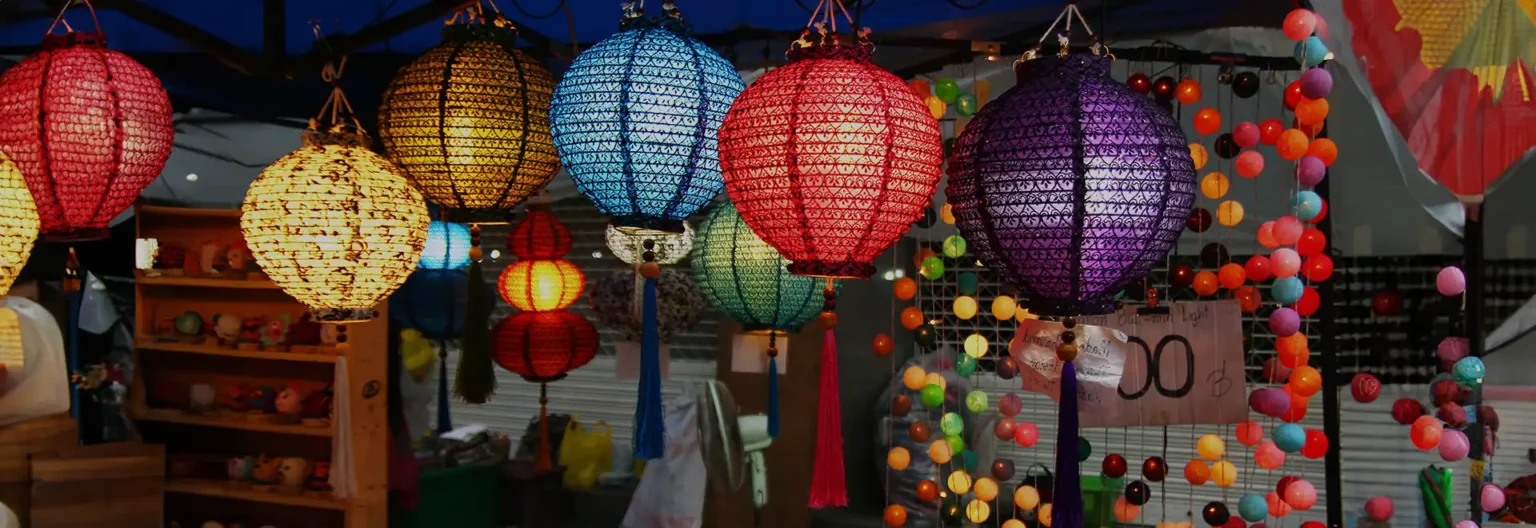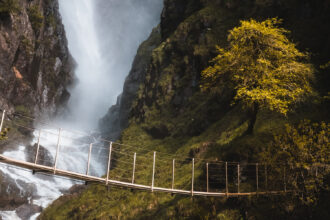If you have only 24 hours in this history city, here is our quick guide on where to go, and what to eat, and clock in those elusive 10,000 steps. Steeped in its richness of mosques, tombs, and forts, Ahmedabad at every turn will surprise and force you to absorb its splendor. Ahmedabad was founded as a walled city in 1411 by Ahmed Shah I of the Gujarat Sultanate. It was declared India’s first World Heritage City by UNESCO in 2017. But if you are only in this 600-year-old city for 24 hours and are unsure of what to see here is a beginner’s guide:
7:00 am: Visit Lucky Restaurant for a hearty breakfast; locally called Dine with the Dead. Treat yourself to its ambiance-letting you dine beside coffins-or cast your eyes on the painting MF Husain gifted it. Try New Irani Restaurant to devour its Mughlai dishes and enjoy the mouth-watering bun maska and Irani chai.
10 am: Start from Sidi Sayed Mosque. This is an excellent mosque popularly called Sidi Sayed Ni Jali. The mosque has image depiction of kalpavriksha or ‘tree of life’. It appears on latticework where the branches that intricately intertwined are symbolic of the city and the logo of prestigious Indian Institute of Management, Ahmedabad. Then proceed to this mosque, and you’re ready to go on an auto-rickshaw trail that will taste the very variegated aspect of local life. Within 15 minutes, you’re at the oldest bastion of the city: Manek Burj, one of the last traces of the remaining medieval wall that encircled Ahmedabad. Visit Ahmed Shah’s First Royal Mosque, a unique mosque where the royals offered their prayers, and where none of the pillars nor minarets is alike. Built in 1414 by Ahmed Shah, this is the oldest mosque in the city. It is typically Gujarat style of Indo-Islamic architecture where its facade features carved panels, two minarets on either side, and stone screens with jaali-work to filter sunlight. Right opposite the mosque stands the First Club of Gujarat. It is one of Sardar Vallabhbhai Patel’s favourite haunts and here he first met Mahatma Gandhi in 1916.
11 am: Bhadra Fort or Arak Fort marks the imagination of every eye of the onlookers. It is the oldest enclave of the city and is named after the Bhadra Kali temple situated within, added by the Marathas. The Mughal Empire created the Azam Khan Sarai in the 17th Century and the British added a clock tower in the 1870s. The storied past whispers through the city’s 10-kilometre-long wall, which was initially constructed with 12 gates and 189 bastions and then fortified with 6,000 additional ramparts. One of them is the famous Teen Darwaja. It is an exquisite example of Indo-Saracenic architecture-it is from where Mughal emperor Jahangir and his wife Nur Jahan once watched processions to Jama Masjid. It also sports a royal notification by the Maratha governor Chimanji Raghunath, for equal inheritance of ancestral property among women. For a perfect retreat, one finds no better place than Jama Masjid. Built in the 15th Century, it is one of the largest mosques in the Indian subcontinent. In the sprawling marble paved court lies a quite area at its center, ideal for preparation before prayers. The space is surrounded by colonnaded galleries with Arabic and Urdu inscriptions. Manek Chowk is the spot where all the foodies gather in the night, but by morning it becomes the very spot in history books, as it houses the First Stock Exchange building. The building was built in 1919 and served as a stock exchange until its shifting to Kamdhenu Complex at Panjarapol in the 1990s. European style of architecture is followed here along with its high decoration work and very ornate balconies, which are in jharokha style of architecture.
12pm: Having seen the city’s tombs, mosques, and forts, it’s now time to check out the living quarters of Ahmedabad. These living quarters are called pols and total 600 pols with narrow, winding streets and intricately carved wooden facades. One of the most notable ones is Kavi Dalpatram Chowk, in tribute to the great Gujarati poet, writer, and scholar of Sanskrit, best known for his work on women’s rights and caste reform. Situated on the site of his original residence, which was destroyed in around 2001, the chowk boasts a memorial to the poet, who lived between 1820 and 1898. For color, visit the old city to the Swaminarayan Temple. Established in 1822 as the first temple of the Swaminarayan Hindu cult, this temple hosts magnificent multi-colored wood carvings. The panelling of Burma teak is richly detailed with artistic embellishments, and gateway sculptures are varnished with the brightest Rajasthani costumes and colors.
12.30 pm: You have probably spent the morning sightseeing and could well be looking to fill your belly. Get a table at ITC Narmada Peshawari. This wining restaurant breathes life into the hearty flavours of the North-West Frontier.
2 pm: Visit Adalaj ni Vav stepwell that lies about 19 kilometres north of Ahmedabad. It is one of Gujarat’s most remarkable stepwells. Constructed in 1499 by Queen Rudadevi in the name of her husband, Veer Singh of the Vaghela dynasty, this stepwell has three entrance openings that converge at a platform supported by 16 pillars. The kalpvriksha and ami khumbor, carved of single stone slabs, are some of the amazing carvings seen in this excellent example of Indo-Islamic architecture with Jain influence.
4pm: On coming back to the main city, visit Sabarmati Ashram. Sabarmati Ashram was established on 25 May 1915 to mark Mahatma Gandhi’s arrival from South Africa and later shifted to a place near Sabarmati River on 17 June 1917. Don’t miss to see the sunset at Atal Bridge otherwise known as Sardar Vallabhbhai Patel Bridge, five kilometers off. Completed in 2012, the gigantic 1,325-metre cable-stayed bridge over the Sabarmati River connects both sides of the city, bearing the name of the former Prime Minister, Atal Bihari Vajpayee.
Stay: The luxury ITC Narmada is a responsible luxury hotel that comes from the culture and tradition of Gujarat. The architectural idea has been motivated from the Narmada river, intricate stepwells of Gujarat, traditional Toran gateways and beautiful latticework. The culinary offerings also include five distinct cuisines: Peshawari, inspired by the North-West Frontier of India; Royal Vega, dishes with deep-rooted local culture and ancient Indian cooking methods; Adalaj Pavilion, an all-day dining experience inspired by the Adalaj ni-Vav stepwell; Yi Jing, Chinese cuisine in simple and contemporary style; and Fabelle, chocolate boutique in-house. A spa is Kaya Kalp, a swimming pool, a gym, and a sauna.
6 pm: If you really want to take home a piece of local culture, then sharpen up those bargaining skills and off to Law Garden. It is a dynamic market where you can see the most gorgeous chaniya cholis, dupattas, and jewelry.
9pm: Manek Chowk, named after the 15th century Hindu saint Maneknath, who helped Ahmed Shah I to construct the Bhadra Fort, dresses up different caps as the day starts from being a vegetable market to a jewellery bazaar to finally turning out to be a pitstop for savoring local street food. Until late night, the spot remains vibrantly awake with a range of food available here-like pav bhaji and masala dosa.
Conclusion:
In just one day, Ahmedabad offers an enchanting blend of history, culture, and gastronomy. By immersing yourself in its vibrant pols, exquisite architecture, and local flavors, you’ll not only discover the city’s past but also its lively spirit. This 24-hour adventure promises to leave you with lasting memories of Gujarat’s capital.







